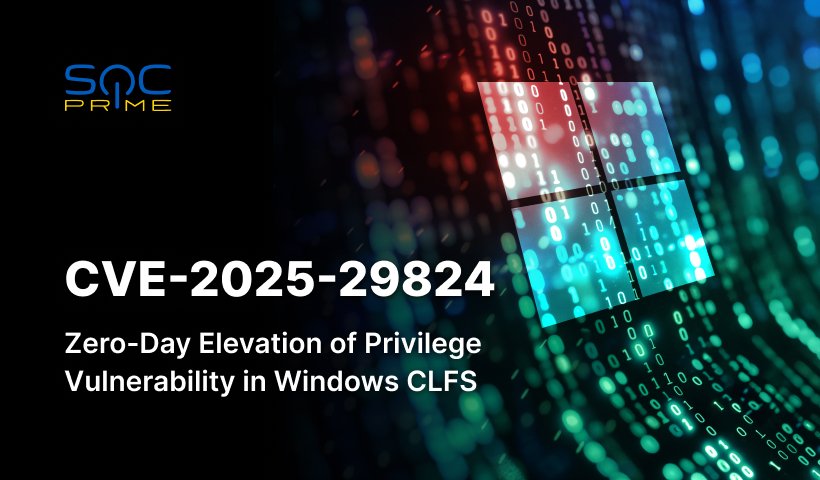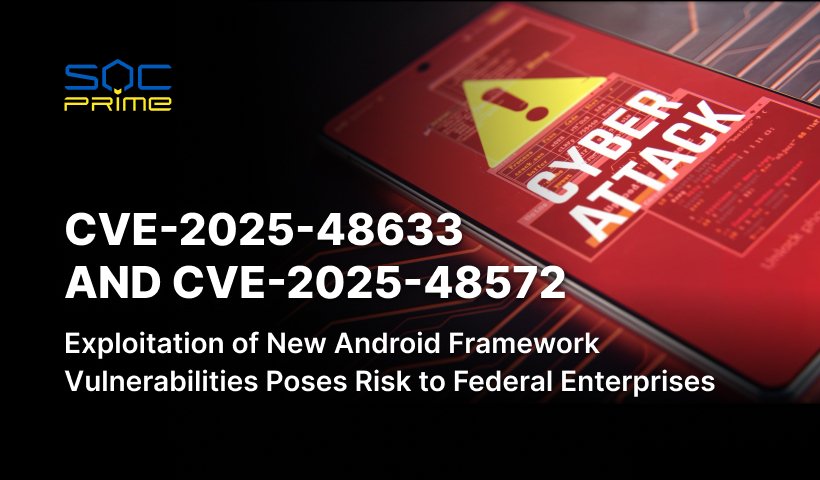CVE-2025-29824 Vulnerability: Exploitation of a Windows CLFS Zero-Day Could Trigger Ransomware Attacks

Hot on the heels of the CVE-2025-1449 disclosure, a vulnerability in Rockwell Automation software, another critical security issue affecting widely used software products is now drawing the attention of the defenders. CVE-2025-29824 is a zero-day vulnerability in the Windows Common Log File System (CLFS) that gives threat actors the green light to escalate privileges to SYSTEM on already compromised Windows systems. The flaw, which has been exploited in the wild and could be potentially weaponized in ransomware attacks, has been recently fixed.
With cyber threats becoming increasingly sophisticated, staying ahead requires proactive detection to minimize the attack surface. Explore SOC Prime Platform to access the world’s largest Detection-as-Code library of use cases and take immediate action on any organization-specific threat in under 60 seconds. Click Explore Detections to reach a comprehensive collection of Sigma rules tagged by “CVE” and take advantage of an unparalleled fusion of technologies backed by AI and ML to empower threat detection and hunting.
Detection algorithms can be used across multiple SIEM, EDR, and Data Lake technologies, are mapped to MITRE ATT&CK® for streamlined threat investigation, and are enriched with actionable threat context, including CTI links, attack timelines, audit configurations, and other relevant metadata.
CVE-2025-29824 Analysis
Microsoft’s team has recently identified a zero-day elevation of privilege vulnerability in the Windows CLFS being exploited after the initial compromise. This flaw tracked as CVE-2025-29824 with a CVSS score of 7.8 has affected a limited number of targets, including organizations in the IT and real estate sectors in the U.S., the financial sector in Venezuela, a software firm in Spain, and retailers in Saudi Arabia.
The zero-day exploitation is tied to PipeMagic malware, which the Storm-2460 group has used to deploy ransomware. While the initial access vector is unclear, Microsoft observed the group using the certutil tool to download a malicious MSBuild file from a legitimate but compromised site. This file decrypted and executed the PipeMagic malware using the EnumCalendarInfoA API callback.
Once deployed, PipeMagic launched the CLFS exploit in memory via dllhost.exe, targeting the CLFS kernel driver. The exploit used NtQuerySystemInformation to leak kernel addresses and RtlSetAllBits to grant full privileges, enabling process injection into SYSTEM processes.
Successful exploitation attempts lied to winlogon.exe being compromised with the injected payload. Then adversaries applied the procdump.exe command-line utility to dump LSASS memory, facilitating credential theft. Following this, threat actors deployed ransomware, encrypting files, appending random extensions, and leaving behind a ransom note named.
Microsoft rolled out patches for CVE-2025-29824 on April 8, 2025. Notably, systems running Windows 11, version 24H2, remain unaffected by the observed exploit activity despite the flaws’s existence. As potential mitigation for CVE-2025-29824, defenders recommend prioritizing patching to help prevent ransomware from spreading if attackers manage to breach initial defenses.
To minimize the risks of exploitation of similar privilege escalation flaws, critical zero-days, and other known CVEs, SOC Prime Platform provides security teams with a complete product suite built on a unique fusion of technologies, backed by AI and automation, and powered by real-time threat intel to help global organizations across multiple industry verticals and diverse environments scale their SOC operations. Secure your spot on April 22 at 12 PM (EDT) for an in-depth look at how SOC Prime Ecosystem unlocks the full potential of your security stack by harnessing the power of automation and AI.



